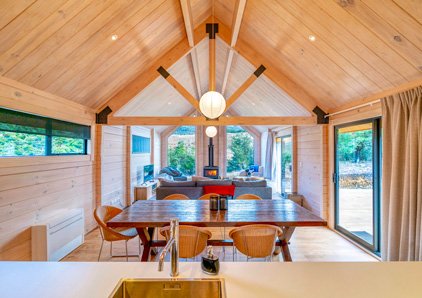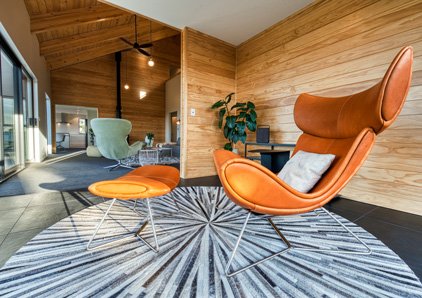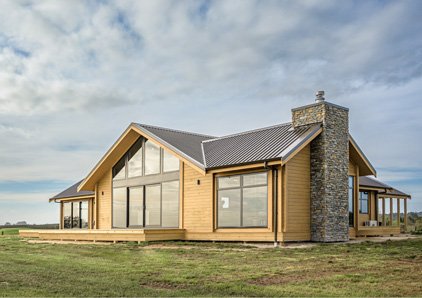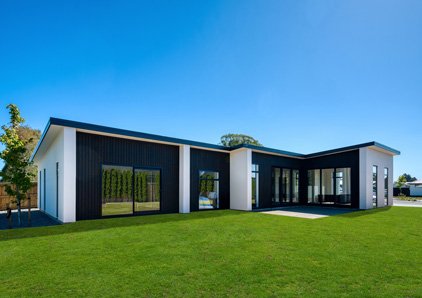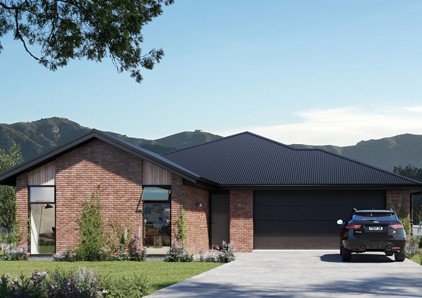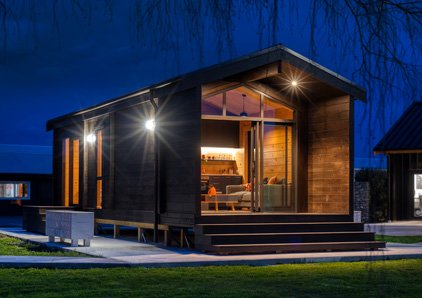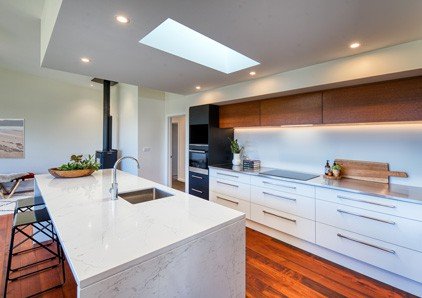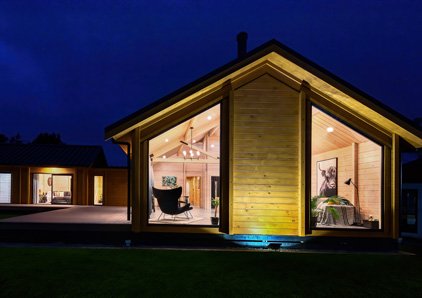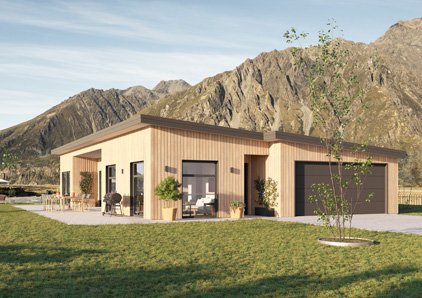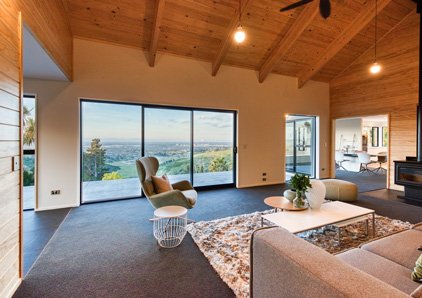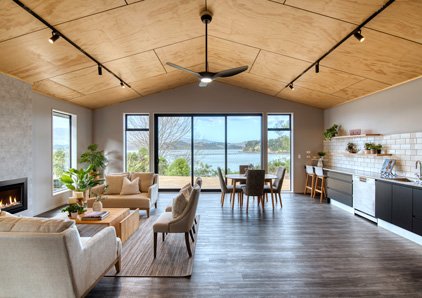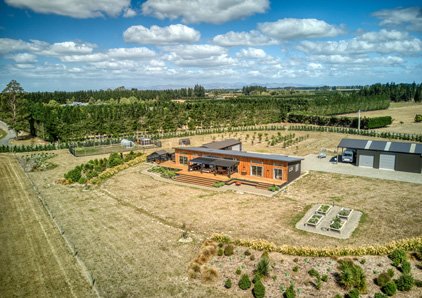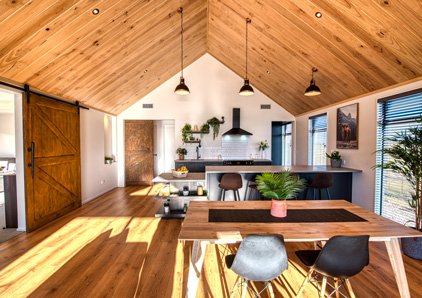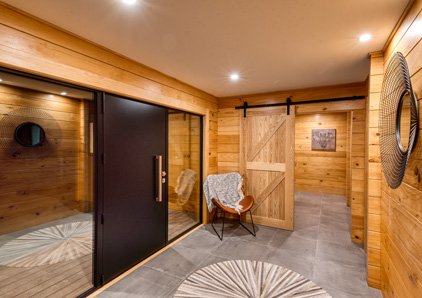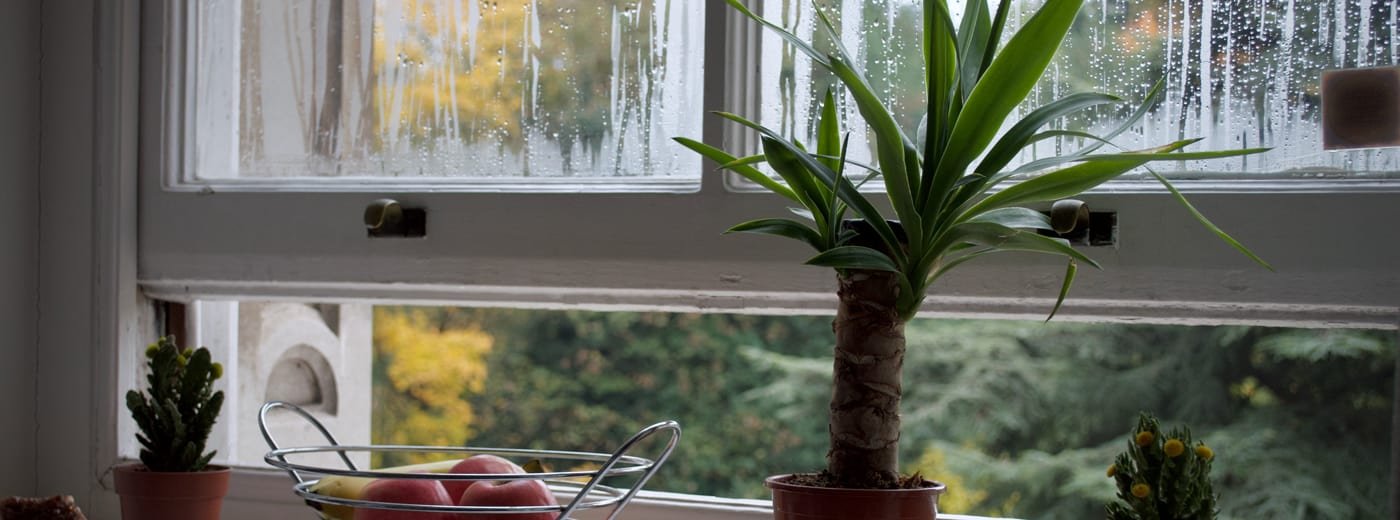
Winter is well and truly here and many of you will be battling the daily curse of condensation dripping from your windows when you get up in the morning. In this blog we look at why condensation forms and what you can do to prevent condensation in your home.
Given the right conditions condensation will form on any surface, but it is often most visible on windows. However, that dampness could be lurking throughout your home.
Although windows may seem like the culprit because that is where the water droplets can be seen, they are not actually the cause of condensation. Condensation is due to the daily activities of you and your family within your home – activities such as cooking, showering and washing and drying clothes.
The air inside your home contains moisture. When the indoor temperature cools down the air cannot hold as much water vapour. The result is that the water vapour condenses as a liquid and becomes visible particularly on cold non-absorbent surfaces such as windows. Unseen moisture penetrates your carpets, fabrics and any other absorbent surface often making them feel cold and damp.
The key to banishing condensation is to keep your home warm. That is why when we are asked around the most experienced people on our team for their recommendations, the number one thing they unanimously said to spend money on when building is upgrading the insulation and making sure your house has an effective source of heating and adequate ventilation. If you don’t adequately heat your home and extract moisture effectively then you will get condensation, even in a brand new home.
Our next recommendation is that if you still have some money available in your budget you should consider installing thermally broken windows. Thermally broken windows are a good idea to reduce the condensation caused by the warm internal air condensing on the cold aluminium frames.
It is important to understand that thermally broken windows will not eliminate condensation on their own as you still need to remove the moisture generated in your home using ventilation.
Another glazing option is low-emissivity (Low E) glazing. Low E glass has a special coating which reduces heat loss through the glass and because the glass temperature is warmer this helps reduce the likelihood of condensation forming on the surface of the glass. To give you an idea of the costs involved in upgrading from regular double-glazed windows, thermally broken windows will cost around $5300 extra for a 120sqm home while Low E glazing will cost about an extra $9500 for the same home.
As you can see, there are a number of different strategies that you can use when building to minimise the risk of condensation forming in your home and it is up to you to weigh up the costs versus the benefits and decide what is right for your home and your budget.
